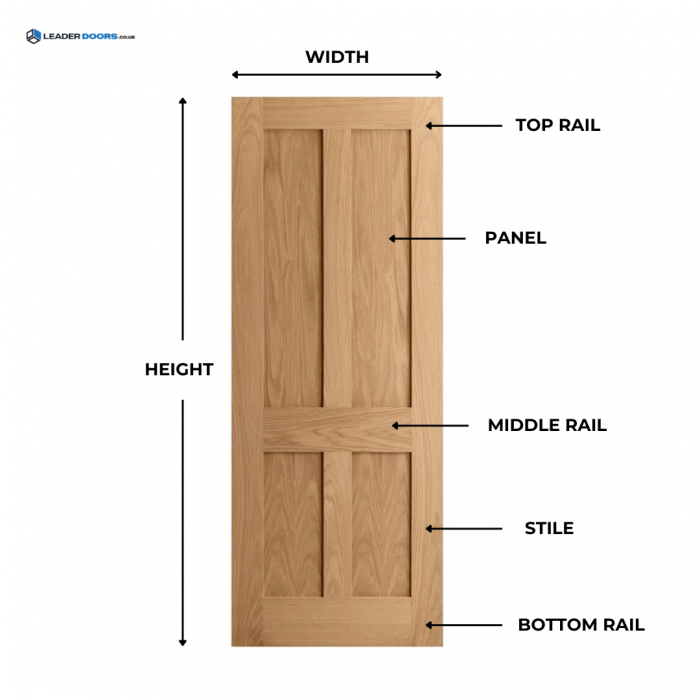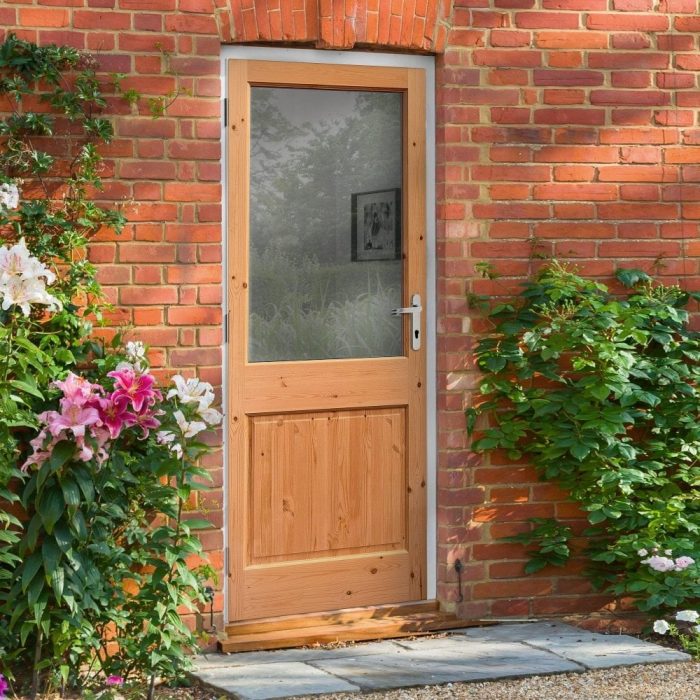Buying new doors can be quite surprising when you realize how many different sizes are available. While there are some "industry-standard" sizes most suppliers follow, they aren't always universally applicable, especially in the UK market where older doors tend to have irregular shapes.
It's always wise to measure your existing doors before purchasing new ones, rather than relying solely on standard sizes, to ensure the correct fit. We've put together a straightforward guide to help you take accurate measurements and avoid common pitfalls that often trip up beginners.
**Table of Contents**
- How to Measure for New Internal Doors
- How to Measure for New External Doors
- How to Measure for Bifold Doors

**How to Measure for New Internal Doors**
The simplest method is to measure the door you're replacing. But if the door doesn't fit well, there's no existing door to measure, or it's a new opening without a frame, you'll need to measure the gap and adjust accordingly. In any case, you’ll need to measure the width, height, and thickness of the door or the opening.
**Step 1: Measure the Width**
- Use a measuring tape to measure the width at three points: top, middle, and bottom.
- Older doors and openings may not be perfectly rectangular, so take multiple measurements and use the largest number as your door width.
- Ensure you're only measuring the door itself and not including parts like weatherstripping.
**Step 2: Measure the Height**
- Run the tape measure from top to bottom in a straight line, checking multiple spots in case of varying heights.
- Double-check that you're not including extra door components, such as a door sweep, in your measurements.
**Step 3: Measure the Thickness**
- Measure the thickness by running the tape from one edge of the door to the other.
- Make a note of this number and also measure the door jamb on the frame to ensure compatibility.

**Additional Considerations for Measuring Internal Doors**
If measuring between the frame:
- Your measurement would be "frame-to-frame."
- Measure the width from left to right and deduct 2-3mm from each side to allow for smooth operation and prevent cracking or warping during seasonal changes.
If there’s no door or frame:
- If it’s a new opening without a frame, it’s typically called the “brick-to-brick†opening. Measure the rough opening size (width and height) and consider adjustments for framing.
- **Tip**: Once you have all three measurements, repeat the process for every door you intend to replace. Internal doors in a home are rarely uniform in size or thickness, so measure each one individually.
[Watch Video: Leader Doors - How to Measure and Install a Door]
**How to Measure for a New External Door**
External doors are measured similarly to internal doors but may require extra attention to detail for the best fit.
Measuring for a New Door in an Existing Frame:
- It’s best to measure the new frame rather than the old one for a more seamless fit.
- Measure the width, height, thickness, and side panels (if applicable).
Replacing the Door and Frame:
- If replacing both the door and the frame, measure the structural opening, brick to brick.
- Deduct 2 inches from the width and about 2.5 inches from the height of the brick opening to ensure a proper fit.
- Consider subtracting room for draft excluders, which can add up to 25mm in height.
**Tip**: The height measurement is crucial for external doors to ensure weatherproofing fits snugly and keeps drafts out.

**How to Measure for Bifold Doors**
For bifold doors, measure the full width and height of the opening, including the frame.
- Measure the width at the top, middle, and bottom, using the smallest width for your order.
- Measure the height at different points and use the smallest measurement.
- Check the diagonal measurements to confirm the opening is a perfect rectangle.
- Precision is key for smooth operation, so measure accurately and ensure the floor is level.
For large openings, especially with glass doors, UK building regulations may apply, such as safety glass requirements. Always seek professional advice if unsure.
**What if I Can’t Find the Right Door Size?**
If finding the exact size proves difficult, consider purchasing an internal door slightly larger than your opening to trim it down to fit. For external doors, opt for the smallest measurements. The amount of adjustment varies by manufacturer, so check before purchasing. We’ve also prepared a guide on standard door sizes to assist you.
**Can I Just Measure the Door I'm Replacing?**
While measuring the existing door is the easiest approach for replacements, verify that it fits snugly in the frame and has no rubbing or excessive gaps.
**Shop Internal and External Doors from Leader Doors**
With your measurements in hand, you can begin searching for the ideal door. At Leader Doors, we offer a diverse selection of internal and external doors, along with door frames, and even custom-built options tailored to your specifications. Our friendly Door Experts are ready to assist over the phone with sizing, pricing, and availability.
**Related Articles**
- How to Trim Engineered Timber Doors
- How to Fit a Door Frame
- How To Fix A Sticking Door
---
**Final Thoughts**
Taking accurate measurements is essential for ensuring your new doors fit properly and function as intended. Whether you're upgrading internal doors for aesthetics or replacing external doors for durability, the process requires attention to detail. If you're ever uncertain, consulting a professional can save time and prevent costly mistakes.
Integrated Radiator Valve,Universal Radiator Valve,Hot Water Radiator Valve,Column Radiator Valves
Ningbo Safewell Plumbing Co., Ltd. , https://www.safewellbrass.com